John 5 Shows Off His Telecaster Collection and Discusses New Album, 'Careful with That Axe'
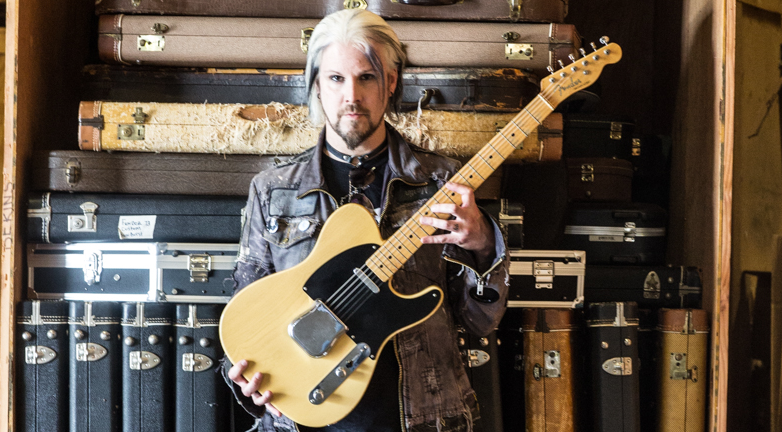
“It all starts when you get your first guitar for Christmas or your birthday,” John 5 explains. “You never know what that guitar is going to bring you. Is it going to bring you happiness or sadness, fortune or poverty?”
In John’s case, that first guitar, acquired at the tender age of seven, has led to a stellar career as one of recent rock’s most admired and sought-after guitarslingers. He’s enjoyed high-profile stints with everyone from Marilyn Manson to David Lee Roth to k.d. lang to Lynyrd Skynyrd.
Since 2005, he’s been guitarist-in-chief for Rob Zombie and is currently working on the score for Zombie’s newest horror flick, 31. In the past decade, the man born John William Lowery has also emerged as a solo artist and all-around virtuoso guitar hero in his own right. He pioneered the now-popular, if unlikely, hybrid of shred guitar and wild country pickin’, and serves it up with his own twisted sense of campy goth panache.
John’s newest solo album, his eighth to date, is called Careful with That Axe and features bassist Matt Bissonette (Joe Satriani, David Lee Roth, Elton John) and drummer Rodger Carter (Lita Ford, Gene Simmons, Glen Campbell). The album is packed with all the speed-demon riffology and feats of fretboard acrobatics that his fans have come to expect. “I wanted to make this record so intense,” he says. “You know, it’s a guitar record. It’s not like anything else. So I just wanted to make it absolutely insane. Really crazy playing.”
The album’s title is a nod to Pink Floyd’s 1968 tour de force psychedelic jam “Careful with that Axe, Eugene.” But given the macabre side of John’s persona, he feels that the name has a special resonance in his case. “An axe is a guitar, obviously,” he says. “But the phrase ‘careful with that axe’ could also be about ax murders, and some of the song titles revolve around ax murders.”
While his over-the-top playing style is always reckless and daring, John has indeed been careful with his ax, steering it from triumph to triumph amid the meltdown vicissitudes of the music business. And he’s especially careful with the axes in his legendary collection of mint-condition vintage Telecasters.
“I’m a Telecaster connoisseur, and I love my Teles,” he says. “I have one from almost every year since the very beginning, in 1950. I’m so obsessed with them. I just really enjoy the history of Fender—the story of Fender and how it all came about. I have a collector’s soul.”
For Careful with That Axe, John mainly stuck with his favorite contemporary Fender, a gold John 5 signature model Tele. “I’ve had that guitar for about six years now, and it’s just worn in beautifully,” he says. “I play it all the time. I didn’t use a lot of other guitars on the album just because we were playing everything live in the studio and just this one guitar gave me pretty much everything I needed.
"I only used one Marshall JVM combo amp with a Boss Super Overdrive, Boss Noise Supressor and Boss Chorus. That’s pretty much what I use live too, when I’m playing with Zombie, and I wanted to have that vibe in the studio. I didn’t use a lot of gear this time because I just wanted to do everything with my hands. I went into this kind of like a boxer. I trained and trained, and I rehearsed quite a bit with Rodger and Matt. I think they both did a phenomenal job with this, just sounding out of control at times, but then pulling back on the songs that called for that.”
The album reflects on John’s formative years as a guitar monster in training, starting with the opening track, “We Need to Have a Talk About John.” A chaotic collage of wild sounds and spoken-voice snippets, it sets the mood for what’s to come. “When my parents gave me that first guitar, I became totally obsessed,” John says. “I would stay in my room all the time with it, and my parents were concerned. That’s why the track is called ‘We Need to Have a Talk About John.’ It’s just this weird intro—all this crazy stuff. That’s kind of what was going on in my mind at that time.”
Other tracks pay homage to some of John’s earliest musical influences. The frenzied first single, “This Is My Rifle,” he says, “is a kind of tribute to Al Di Meola. And there are two covers of songs by [country guitarist/singer/songwriter] Jerry Reed—‘Jerry’s Breakdown’ and ‘Jiffy Jam’—’cause my dad used to listen to Jerry Reed a lot, and that’s what I heard growing up. And the song ‘El ‘Cucuy,’ which means ‘The Boogieman,’ is a tribute to Spanish flamenco guitar, which I really love.”
For “El Cucuy,” John played a Martin nylon-string and a D-45 steel-string, while for the two Jerry Reed tunes, he busted out one of the rarest items from his vintage Tele collection: his 1950 Broadcaster.
“For those songs, I wanted that traditional sound of the old Fifties and Sixties type of playing,” he says. “And of my vintage Teles, I would have to say this Broadcaster is my favorite. It’s got a small neck and I’ve got small hands. It’s just a great player. Fender only made about 150 of these guitars. Leo Fender loved TV and radio, so he named the guitar the Broadcaster. But Gretsch already made a drum set named the Broadkaster, so they sued Fender and Fender had to stop making Broadcasters immediately. So they’re very rare. The one I have is all original, and it’s in perfect condition. It’s the cleanest Broadcaster I’ve ever seen. I got this from Norm’s Rare Guitars, and even they said it’s the cleanest Broadcaster they’ve ever seen. It was the priciest of any of my guitars. I paid about $135,000 for it, but it’s worth it.”
John’s vintage guitar collection is lodged in massive wooden storage crates inside a warehouse at a top-secret location. “The crates are kept off the ground in case of, God forbid, a flood or an earthquake,” John explains. “Because they’re all really expensive guitars. The best of the best of the best. I have tons of Telecasters but also about 50 Les Pauls, six or seven SGs and a bunch of Gretsches. I have pretty much everything, and I keep it all in this storage place. I’ll break one out every once in a while and play it.”
Always a collecting maniac, John had previously amassed a horde of Kiss posters that he sold for $75,000 a few years back. He used that money to start his vintage guitar collection. Asked to name his top five Fender faves from the collection, apart from the 1950 Broadcaster, he’s quick to cite his 1961 Telecaster Custom with a rare sienna sunburst finish. The instrument is so pristine, it still has the original hangtag dangling from the headstock.
“This is another one I got from Norm’s Rare Guitars,” he says. “This guitar had just one previous owner, who purchased it from Ernie Ball’s music store on Ventura Boulevard in 1961 for $200. [The shop, at 19501 Ventura Boulevard in Tarzana, was the first music store in America to sell guitars exclusively.] The guitar came with the original purchase sheet. It’s just a beautiful piece of wood. Fender only did the sienna sunburst—with the red sides rather than the dark, almost black sides—until about 1962. So it’s rare to get one of these. It’s one of my most prized possessions.”
Next up on John’s Top Tele list is a 1959 Telecaster in absolutely mint condition that he tracked down at Dave’s Guitar Shop in Wisconsin while passing through the state on tour. “I hunt all the time,” he says. “I do love the hunt. Sometimes I find a great deal. Sometimes I find a guitar that’s not such a great deal. But you gotta do what you gotta do, ’cause you’ll never find it again.”
Like most lovers of early Telecasters, John has a special fondness for “blackguard” Telecasters/Broadcasters and Esquires—those produced between 1950 and 1954, which are recognizable by their black pickguards. His 1954 blackguard Telecaster boasts a particularly vivid and gorgeous blond finish. “The reason why the color is so light is that the guitar has not been out of the case so much,” he says. “So it’s kept its original color really well. They’re usually darker in color ’cause they’ve been out in the light. But this one is really bright.”
Then there’s John’s 1952 Esquire. The Telecaster’s single-pickup cousin, the Esquire was actually Fender’s first foray into the solidbody Spanish guitar market, preceding the Broadcaster by a few months in 1950. Like everything in his astounding collection, John’s 1952 Esquire is in frighteningly mint condition.
“I got a really good deal on this one,” he says, beaming. “I paid around $30,000 for it, but it’s worth a lot more today, especially in this condition.”
Not at all hung-up on the past, John also has a penchant for designing brand-new custom Teles based on bizarre concepts. These include such curios as his famed Lava Lamp Tele. Its clear, hollow acrylic body is filled with green antifreeze, which produces trippy visual effects. He calls his latest creation Tele-Vision.
“I had this Fender Esquire body laying around,” he explains. “I routed it out and put an iPad Mini in it. So when I’m playing this guitar onstage, I’ll have a movie playing on it. I just thought it made a lot of sense, since the Broadcaster and Telecaster were named for TV, and everything is so visual these days. Everybody’s watching downloads of TV shows, videos and movies. I think Leo Fender would be proud of this guitar.”
Photos: Sean Murphy
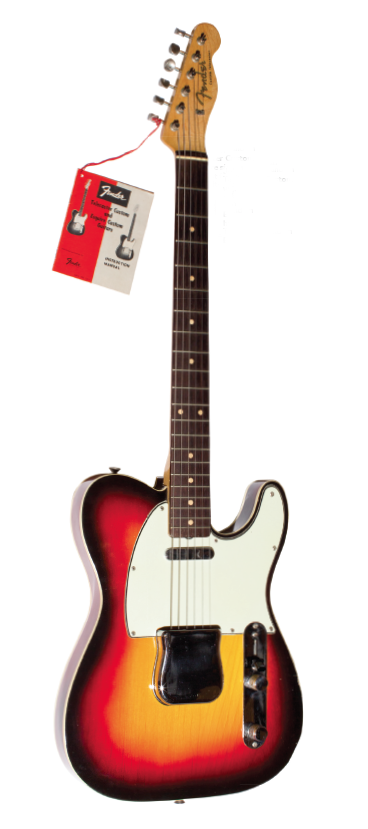
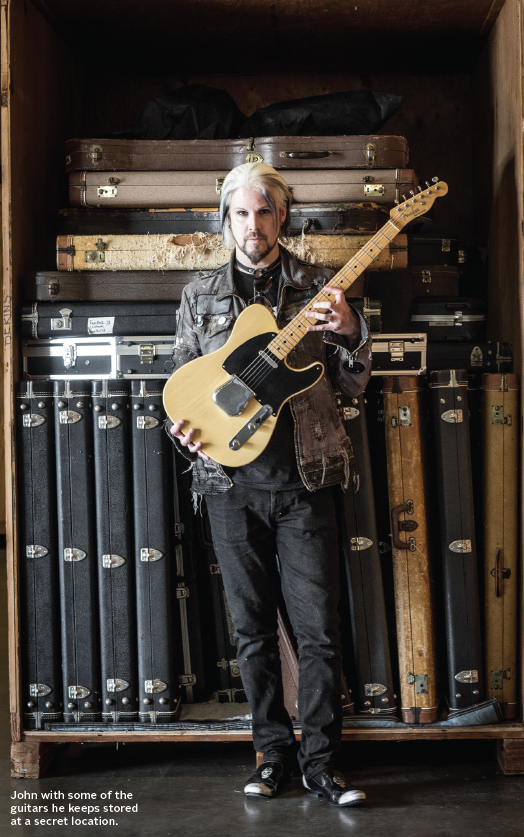
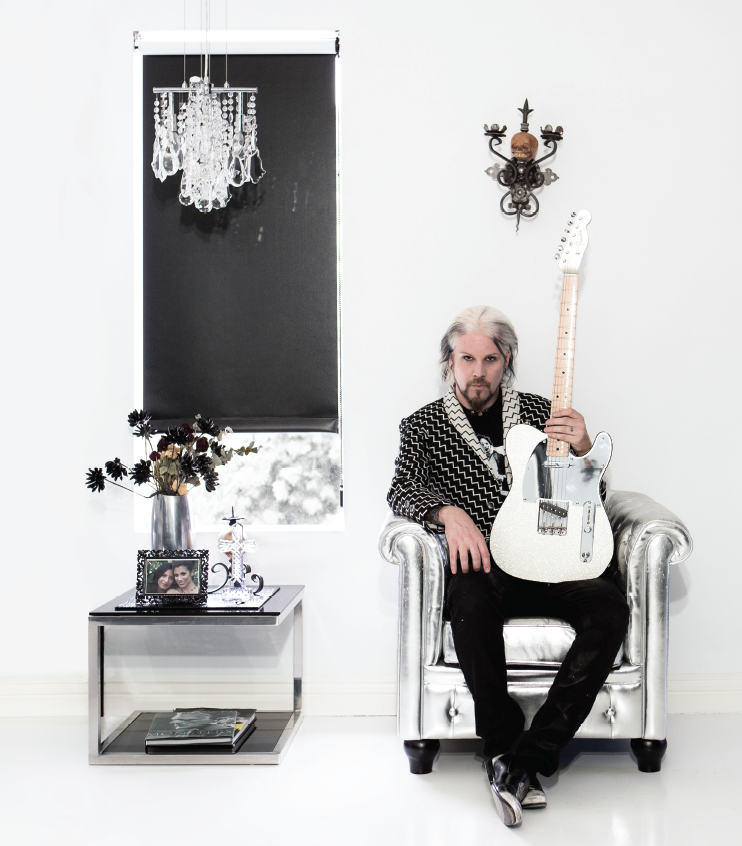
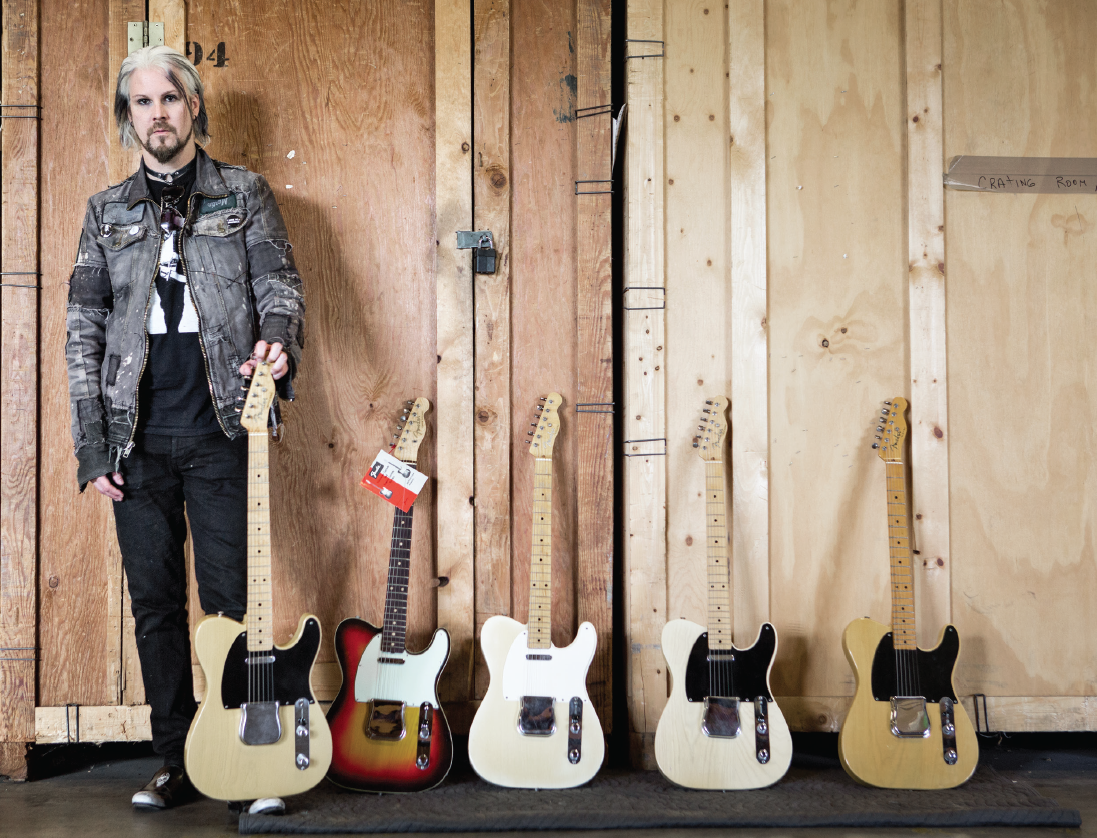
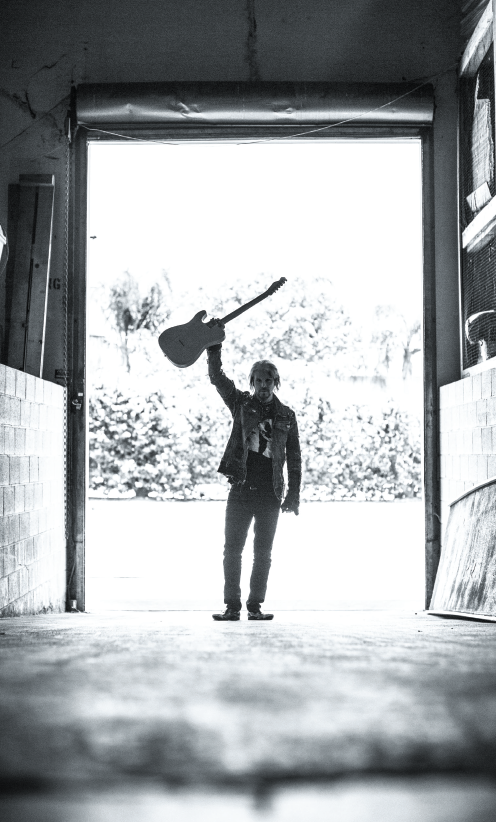
Get The Pick Newsletter
All the latest guitar news, interviews, lessons, reviews, deals and more, direct to your inbox!
In a career that spans five decades, Alan di Perna has written for pretty much every magazine in the world with the word “guitar” in its title, as well as other prestigious outlets such as Rolling Stone, Billboard, Creem, Player, Classic Rock, Musician, Future Music, Keyboard, grammy.com and reverb.com. He is author of Guitar Masters: Intimate Portraits, Green Day: The Ultimate Unauthorized History and co-author of Play It Loud: An Epic History of the Sound Style and Revolution of the Electric Guitar. The latter became the inspiration for the Metropolitan Museum of Art/Rock and Roll Hall of Fame exhibition “Play It Loud: Instruments of Rock and Roll.” As a professional guitarist/keyboardist/multi-instrumentalist, Alan has worked with recording artists Brianna Lea Pruett, Fawn Wood, Brenda McMorrow, Sat Kartar and Shox Lumania.

